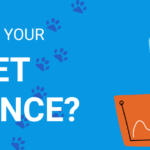
Starting out in marketing can feel like learning a whole new language.
Between acronyms, marketing lingo, and buzzwords, it can feel like a bowl of alphabet soup.
That’s where we come in. We’ve rounded up the terms every beginner actually needs to know — no confusing lingo, no eye-rolls, just plain-English explanations.
🔎 SEO & Website Terms
SEO (Search Engine Optimization)
➝ The practice of improving your website so it shows up in search results like Google. SEO involves making your site helpful, relevant, and trustworthy so that more people can actually find you. When done well, SEO increases visibility and generates organic traffic without the need for paid ads.
GEO (Generative Engine Optimization)
➝ An emerging practice focused on optimizing content so it appears in AI-driven search results (like ChatGPT or Google’s AI Overviews). Unlike traditional SEO, which is keyword-heavy, GEO is about creating content that AI tools find reliable enough to recommend. Think of it as the next generation of SEO.
Schema
➝ A type of code you can add to your site that helps search engines better understand your content. For example, schema can highlight reviews, FAQs, recipes, or events in a way Google can easily read and display. It’s like giving search engines a cheat sheet, so your content appears more prominently in search results.
CMS (Content Management System)
➝ Software that makes it easier to create, edit, and manage website content. Popular examples include WordPress, Squarespace, and Wix. A CMS is essentially the backstage area where your entire site is built and maintained, without requiring you to code everything from scratch.
Landing Page
➝ A focused web page built to drive one specific action — like signing up for a newsletter, downloading a freebie, or booking a consultation. Unlike a homepage, a landing page is stripped down with fewer distractions, making it more likely for visitors to convert.
Bounce Rate
➝ The percentage of visitors who land on your website and then leave without clicking on anything else. A high bounce rate often means people didn’t find what they expected, the site loaded too slowly, or the content wasn’t engaging. Tracking this metric can highlight areas where your site needs improvement.
Conversion Rate
➝ The percentage of visitors who complete a desired action, such as making a purchase, filling out a form, or subscribing to a newsletter. A high conversion rate typically indicates that your website is performing effectively. Marketers track this closely because it shows how effectively traffic turns into results.
Trackback
➝ A type of link from another website pointing back to yours, often used in blogging. It’s like a digital “ping” that says, “Hey, someone mentioned you.” While less common today, trackbacks were an early method for measuring content sharing and credibility.
📱 Social Media & Advertising Terms
CTA (Call to Action)
➝ A phrase or button designed to encourage a visitor to take a specific action, such as “Buy Now,” “Learn More,” or “Sign Up.” CTAs guide your audience through the next step you want them to take. Strong CTAs stand out, feel clear, and make it easy for users to act quickly.
CTR (Click-Through Rate)
➝ A metric that measures the percentage of people who clicked a link compared to how many saw it. For example, if 100 people see your ad and 5 click it, your CTR is 5%. This is a helpful measure of how effectively your content grabs attention.
PPC (Pay-Per-Click)
➝ A type of online advertising where you only pay when someone clicks on your ad. Popular platforms include Google Ads and Facebook Ads. PPC is often used to drive targeted traffic quickly, especially when you need fast results or are promoting a specific product or service.
Impressions
➝ The total number of times your content is shown, whether it’s an ad, social media post, or webpage. Impressions don’t measure engagement — just how many times your content appeared on someone’s screen. High impressions can mean good visibility, but they don’t guarantee that people care.
Reach
➝ The number of unique people who saw your content. While impressions count every view (even multiple from the same person), reach shows how many individuals were actually exposed to your message. Reach is a more straightforward method for measuring audience size.
Engagement Rate
➝ A metric that shows how much people are interacting with your content, including likes, comments, shares, and saves. It helps measure whether your content is actually resonating with your audience — not just being seen. A higher engagement rate often signals stronger connections with your followers.
📈 Funnel & Customer Terms
Lead
➝ A person or business that has shown interest in your product or service. This could be someone who filled out a form, downloaded a resource, or requested more information. Leads are the first step in building a relationship that could turn into a sale.
Lead Generation
➝ The process of attracting and capturing interest in your business, often through content, ads, or events. The goal is to build a pipeline of potential customers (leads) you can nurture into buyers. Done right, lead generation is like planting seeds that grow into long-term business opportunities.
Prospects
➝ Leads that you’re actively engaging with and nurturing toward a purchase. Unlike cold leads, prospects have already shown genuine interest and are closer to becoming paying customers. Marketing and sales teams focus heavily on prospects because they represent high-potential opportunities.
CRM (Customer Relationship Management)
➝ Software that helps businesses manage relationships and communication with leads and customers. Popular tools like Salesforce or HubSpot store contact information, track conversations, and organize sales opportunities. A CRM acts as a central hub so your team never forgets a follow-up.
KPI (Key Performance Indicator)
➝ A measurable goal that shows whether your marketing efforts are successful. Examples include conversion rates, cost per lead, or customer retention. KPIs give you a way to track progress and prove what’s working (or what’s not).
Metric
➝ Any data point you measure to evaluate performance, such as website traffic, email opens, or social media likes. While KPIs are strategic goals, metrics are the building blocks that feed into them. Think of metrics as the numbers on your dashboard.
ROI (Return on Investment)
➝ A calculation that measures whether your marketing is paying off financially. ROI compares the cost of a campaign to the revenue it generated. A positive ROI means you made more than you spent; a negative ROI means it cost you money.
Sales Funnel
➝ A model that describes the customer journey from discovering your brand → considering your product → making a purchase. At the top of the funnel, people are just learning about you, while at the bottom, they’re ready to buy. A well-structured funnel helps guide people through each stage smoothly.
✍️ Content & Branding Terms
Content Calendar
➝ A schedule that organizes when and where your content will be published. This helps you stay consistent, avoid last-minute scrambling, and maintain a balanced mix of posts. Many businesses use tools like Trello, Asana, or Google Sheets to manage their calendars.
Evergreen Content
➝ Content that stays valuable and relevant long after it’s published. Examples include “How-To Guides” or “What is SEO?” posts. Unlike trending topics that fade quickly, evergreen content consistently attracts traffic and builds authority over time.
Tone of Voice
➝ The way your brand “sounds” in writing, whether it’s playful, professional, bold, or casual. A consistent tone of voice helps build trust and makes your brand recognizable. Think of it as your brand’s personality coming through in words.
Storytelling
➝ The use of narratives to create emotional connections with your audience. Instead of just sharing facts, storytelling brings your brand to life and makes your content more memorable. People may forget numbers, but they tend to remember stories.
Thought Leadership
➝ Sharing unique insights, expertise, and perspectives that position you (or your brand) as an authority in your industry. Thought leadership isn’t about bragging — it’s about offering real value that helps others learn, think differently, or solve problems.
Our Final Thoughts
Marketing terms don’t have to feel overwhelming. With this beginner-friendly dictionary, you’ve got a quick reference guide to cut through the marketing lingo and actually understand what matters.
Bookmark it, share it with your team, or pull it up next time someone drops “GEO” in a meeting. (No judgment—we’ve all Googled it before.)
And if it still feels like alphabet soup? Let us know what terms are tripping you up — we’d love to cover them in a future edition.





